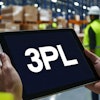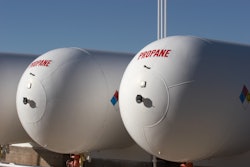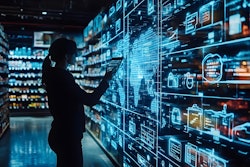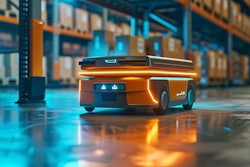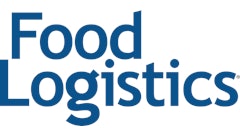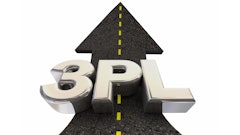
Manufacturing and supply chain are people-first industries built on human connection. Strong relationships underpin their foundation. Yet, both industries now face a radical frontline shift, driven by rapid technological advancements and a rising demand for skilled workers, a need that continues to grow more urgent as qualified employees become increasingly scarce.
Artificial intelligence (AI) is at the forefront of this change. When talking about AI in manufacturing, there are three key areas: machine learning algorithms that drive insights based on worker data; generative AI that creates new content to help train and support workers; and agentic AI that automates decision-making and action to foster better workforce collaboration. AI’s impact extends far beyond machinery and automation; it is now being used together with connected worker technology to reshape how the manufacturing workforce learns, collaborates, and performs. Data-driven evaluations, coupled with real-time on-the-job support and streamlined workforce development, give frontline employees clear task understanding, and a heightened sense of their work's value.
Far from diminishing human connection, AI is fueling its evolution. AI fosters more resilient, skilled, and collaborative employees, developed to combine human expertise with technology to drive operational excellence. By freeing up people from repetitive tasks and providing employees with data-driven insights, AI allows them to focus on what truly matters: building stronger relationships, fostering deeper collaboration, and leveraging their unique human skills to create a more connected and efficient workplace.
Navigating workforce challenges in modern manufacturing
Recent analysis by Deloitte estimates 1.9 million manufacturing jobs could remain unfilled in the coming years. The cause? A lack of knowledgeable workers. As skilled older workers retire, this knowledge gap widens. Consider the seasoned Baby Boomer employee, who often enjoyed a median job tenure of 15 years. This allowed them ample time to build a robust knowledge base. But the workers replacing them are younger, often under 40, and move between jobs more quickly, with an average tenure of about 2.4 years. This brevity hinders their ability to acquire and pass on skills, leaving businesses vulnerable to productivity losses, safety risks, and inefficiencies.
By integrating AI-driven connected worker tools into workforce development, companies empower workers of all tenure levels. These tools identify training needs, assess competencies, address knowledge gaps, and enhance collaboration. It’s not a replacement for human expertise but rather an augmentation of it, giving employees multiple avenues to adapt more effectively to evolving workplace demands. AI drives a positive change in critical areas, cultivating an agile and capable workforce, one that works with technology to enhance their own abilities.
Personalized learning and upskilling
Training works better when fixed to the individual’s needs, and is retained at a higher rate when delivered “in the flow of work.” AI-driven tools, specifically generative AI factory assistants, make that possible. Generative AI-based factory assistants (or copilots) are uniquely suited to generate a personalized learning plan by adjusting training content to the worker's current capabilities and pinpointing skill gaps. This tailored training accelerates upskilling, reduces time inefficiencies, and guarantees workers receive the knowledge they need to excel in their current job.
Personalized learning can significantly improve workforce development. A multinational HVAC manufacturer saw a 72% reduction in new hire onboarding time after implementing a digital skills training system. By using AI-driven insights to identify upskilling gaps, the company also improved cross-training and workforce planning while increasing operational efficiency.
Real-time, less biased feedback for continuous improvement
Traditional performance evaluations often happen yearly, leaving employees unaware of less-than-optimal processes until they become ingrained habits. But AI-based connected worker software can eliminate this lag by providing real-time feedback and immediate corrective guidance. Employees are empowered to build efficient habits from the outset so they can consistently perform at their best.
Beyond better assessment timing, AI can provide a more objective and comprehensive performance measurement. By analyzing data from multiple sources–including training completion rates, productivity metrics, and captured peer feedback–AI provides a holistic and unbiased view of a worker’s capabilities. This helps managers identify both high performers and those who might need additional support.
Moreover, AI-driven automation streamlines compliance tracking, ensuring all employees maintain necessary skill certifications and adhere to safety protocols. This allows managers and employees to focus on collaboration and daily processes, rather than paperwork.
AI-powered communication and knowledge management
Manufacturing efficiency depends on seamless collaboration between interdepartmental teams. This is especially true now when risk and uncertainty are high and where priorities may shift quickly. Agility is critical, and teams that can shift directions fast are more likely to succeed.
AI-based software platforms break down silos and give employees instant access to critical, up-to-date information. As centralized hubs for institutional knowledge, workers can quickly retrieve relevant information on training, troubleshooting, and operational best practices. With this connected environment, teams can build stronger relationships and collaborate more effectively, knowing that the information they access is current and reliable.
Beyond knowledge management, AI-powered factory assistants are revolutionizing team collaboration on the shop floor. These intelligent systems engage in problem-solving by providing context-aware information, answering complex questions, and delivering actionable insights in real-time. When workers encounter unfamiliar situations, these AI assistants offer immediate guidance without requiring a supervisor or specialist. This AI-facilitated collaboration is especially valuable during shift changes or cross-departmental work. By supporting worker upskilling and offering personalized assistance, these AI collaborators bridge expertise gaps and foster a more cohesive workforce capable of maintaining productivity during disruptions.
Capturing and digitizing tribal knowledge is another area where generative AI shines. These systems can transform collaborative exchanges into shareable digital assets – converting a troubleshooting video from a senior expert into training materials or step-by-step work instructions. This preserves crucial institutional knowledge and makes it instantly accessible across the organization, bridging the experience gap between veteran and newer employees.
Enhancing safety through predictive safety analytics
In manufacturing, human error, equipment malfunctions, and fatigue can all lead to costly and dangerous safety incidents. AI can change that. According to a recent Deloitte survey, 78% of businesses attributed better business outcomes, including gains in workforce safety and business growth, to their use of data collection, particularly AI.
AI-based predictive analytics can identify patterns and potential hazards before accidents occur, significantly mitigating workplace risks and potential harm. To achieve this, AI leverages sensors embedded in equipment and integrated into wearable devices.
By continuously monitoring machine conditions, these sensors alert workers to potential failures, allowing them to avert disruptions and potentially dangerous situations. Likewise, wearable sensors can detect signs of worker fatigue, minimizing human error and contributing to safety compliance and a more secure workplace. By proactively addressing safety concerns, AI delivers a more secure workplace, freeing employees to concentrate fully on their responsibilities and drive operational success.
Industrial AI agents take safety monitoring to the next level by proactively overseeing safety compliance across the factory floor. These autonomous systems can detect when safety protocols aren't being followed, identify potential hazards in real-time, and automatically notify supervisors when intervention is needed.
Process optimization and workforce efficiency
The manufacturing industry relies on structured workflows to maintain efficiency. Yet, traditional processes often rely on manual data entry, manual validation of standard work compliance, and time-consuming quality control checks that create bottlenecks. AI is transforming this by automating routine processes and reducing human error so workers can focus on higher-value responsibilities.
AI-powered robotics, for example, can handle repetitive assembly tasks with speed and precision, improving output and consistency. Intelligent scheduling systems analyze real-time production needs and combine that with available worker skills and proficiency levels to allocate labor efficiently. Meanwhile, AI-driven predictive maintenance helps manufacturers avoid unplanned downtime by identifying equipment issues before they escalate. Because the integration of AI into daily operations boosts productivity while minimizing costly inefficiencies, companies can then use their workforce for more strategic activities.
Fostering seamless human-AI collaboration
The future of manufacturing is not about replacing human workers but rather equipping them to work smarter. AI acts as an extension of human expertise, taking on repetitive tasks, surfacing insights into potential operational risks, while allowing employees to focus on decision-making, innovation, and strategic problem-solving.
Companies that embrace AI-driven workforce collaboration will not only improve operational performance but also create a more engaged and knowledgeable workforce. By leveraging AI’s ability to streamline operational data analysis, enhance training, and facilitate human-machine collaboration, manufacturers can position themselves for long-term success in an increasingly competitive landscape. In the end, AI serves as a catalyst for human growth, helping manufacturers to cultivate a workforce where every individual can thrive.


